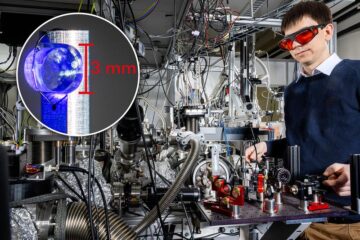Crystallography reveals the 3D structure of mammalian sperm receptor

The findings, presented in Nature, gives a first glimpse into the molecular architecture of animal egg coats, with important implications for the future of human reproductive medicine and the possibility of developing novel contraceptives.
The beginning of every new life starts with fertilization, the most crucial step of which is the initial species-specific recognition between egg and sperm. The receptors for sperm, proteins ZP3 and ZP2, contain a common sequence that allows them to form a matrix of filaments, the so-called zona pellucida that completely surrounds the egg. The Protein Crystallography Unit at Karolinska Institutet, led by Dr. Luca Jovine, has now determined the structure of the most conserved part of this building block, the ZP-N domain.
“ZP3 was identified almost 30 years ago, but obtaining structural information on this key reproductive protein has been technically challenging due to its high heterogeneity”, says Luca Jovine.
The zona pellucida is essential for natural fertilization in mammals. The Karolinska Institutet researchers hope that X-ray crystallographic characterization of a region of ZP3 that is important for its ability to polymerize could help explaining cases of human infertility, as well as lead to the development of novel targeted, non-hormonal contraceptives. The research made on the ZP-N domain has also provided insights that extend beyond the field of reproduction. Among other things, an unexpected parallel has been uncovered with molecular features that are involved in speciation among invertebrates.
Moreover, ZP-N domains are also found in many other extracellular proteins that are unrelated to fertilization, but play important roles in human diseases such as non-syndromic deafness, renal and vascular disorders, and cancer. In the Nature paper, an example is discussed that shows how the structure of ZP-N can be used to understand the molecular basis of some of these disorders.
“Mammalian fertilization involves a highly complex series of events. Our findings pave the way for future investigations into this fascinating subject by providing a first snapshot of the beginning of life at atomic resolution”, says Luca Jovine.
The research was supported by Karolinska Institutet, the Swedish Research Council and the EU Sixth Framework Programme.
Publication: 'Crystal structure of the ZP-N domain of ZP3 reveals the core fold of animal egg coats', Magnus Monné, Ling Han, Thomas Schwend, Sofia Burendahl & Luca Jovine, Nature, 4 December 2008.
For more information, please contact:
Dr Luca Jovine
Department of Biosciences and Nutrition
Work: +46 (0)8-6083301
Mobile: +46 (0)70-1497014
E-mail: luca.jovine@ki.se
Press Officer Sabina Bossi
Work: +46 (0)8-5248 60 66 (redirected to mobile)
E-mail: sabina.bossi@ki.se
Karolinska Institutet is one of the leading medical universities in Europe. Through research, education and information, Karolinska Institutet contributes to improving human health. Each year, the Nobel Assembly at Karolinska Institutet
Media Contact
More Information:
http://ki.seAll latest news from the category: Health and Medicine
This subject area encompasses research and studies in the field of human medicine.
Among the wide-ranging list of topics covered here are anesthesiology, anatomy, surgery, human genetics, hygiene and environmental medicine, internal medicine, neurology, pharmacology, physiology, urology and dental medicine.
Newest articles

Biomarkers identified for successful treatment of bone marrow tumours
CAR T cell therapy has proven effective in treating various haematological cancers. However, not all patients respond equally well to treatment. In a recent clinical study, researchers from the University…

She deciphers how tomato roots communicate
Ora Hazak has always been fascinated by plants and is studying the signals that roots send to the rest of the organism. She aims to understand this communication in order…

Laser excitation of a nucleus
A long-awaited breakthrough opens the door to a new type of atomic clock and the investigation of fundamental questions in physics. After decades of investigation, researchers made an extraordinary quantum…





















